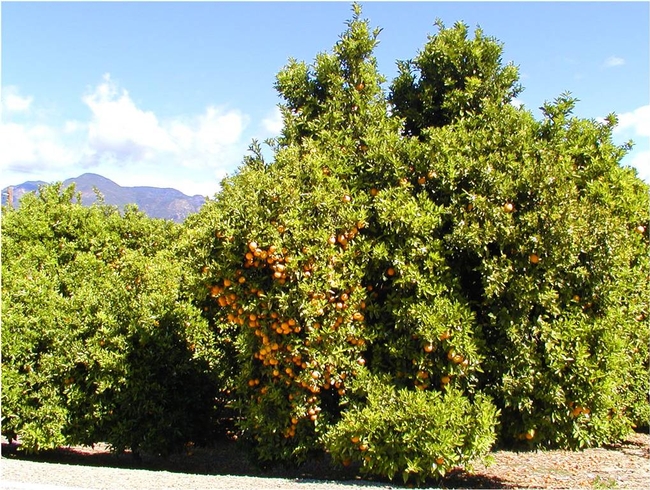Today I thought I'd share a recent research report on the the phenomenon of "enhanced" degradation of the herbicide simazine in citrus orchard soils. Click here for a link to the publication in the open-source journal, Air, Soil, and Water Research (Abit et al. 2012. Air Soil and Water Research 5:69-78). The lead author was a UC Davis post doctoral researcher and her coauthors include UC Davis, USDA-ARS, Fresno State, and UC Cooperative Extension folks.
This work was started several years ago in response to some questions from San Joaquin Valley orchard and vineyardists poor weed control with simazine. They suspected herbicide resistance, which is certainly a possibility given the number of weed biotypes resistant to photosystem II inhibitors reported worldwide (69 biotypes at latest count according to http://www.weedscience.org). However, when we visited some of the fields, it just didn't look like resistance or poor applications - too many species affected, good early control but poor residual performance, affected some orchards but not others, no clear application problems. 
Some colleagues in Colorado and Mississippi were conducting research on faster-than-normal degradation of atrazine, a related triazine herbicide. We decided to conduct laboratory studies to determine if the poor residual performance in our orchard systems could also be due to the so-called "enhanced degradation".
First, some background. To a large degree, all herbicides degrade is soil - a complex molocule is eventually broken down into component elements; however the rate of degradation can vary greatly. The two biggest contributors to herbicide degradation are "chemical processes" that include all sorts of ways that chemical bonds are broken and "microbial processes" in which soil microorganisms use the molocule as a carbon source (ie "food"). Generally, microbial processes are the most important but are usually not specific to a particular herbicide. Sometimes, however, a microbial population with a special ability to degrade a particular herbicide (or chemically related compounds) can build up in the population and very rapidly degrade all of the herbicide. [analogy: a bowl of candy on your desk that lasts for weeks if you eat one or two per day but lasts only a few seconds when your hungry teenager and his friends show up!].
To determine if there were differences in simazine degradation rates among orchards, we collected soil from 27 citrus orchards in Tulare and Ventura counties. The orchards had a range of simazine use histories ranging from being treated every year for decades to having no simazine for at least the past 15 years.
1. In one set of experiments, we found that the soils that had not been exposed to simazine for at least 15 years degraded the herbicide much more slowly and that annual use (for the past 5 years, or longer) tended to be accociated with faster degradation.
2. In a second set of experiments, we autoclaved (heat sterilized) soil to kill any microbes present to determine if the herbicide degradation was due to microbial activity. This study showed that the degradation was almost completely due to microbial degradataion - simazine degradation was almost non-existent in autoclaved soils. Some soils have the the specialized microbial population while others do not.
The conclusions of the study were that repeated use of simazine can lead to more rapid degradation of the herbicide but that the correlation was not perfect. The correlations were better in the Tulare County sites than in the Ventura County soils. Some soils with long-term use of the herbicide continued to degrade simazine at a "normal" rate while other degraded it faster than predicted.
Overall, this is an interesting phenomenon that growers and pest control advisors should be aware of when making weed control decisions. Simazine can provide very effective and economical weed control in many situations but, as always, we recommend monitoring orchard conditions and adjusting weed control strategies accordingly.
This research was partially supported by funding from the California Citrus Research Board and USDA-ARS.
A couple of my previous posts on herbicide degradation at the UC Weed Science Blog can be found at: http://ucanr.org/blogs/blogcore/postdetail.cfm?postnum=5929 and http://ucanr.org/blogs/blogcore/postdetail.cfm?postnum=3923

